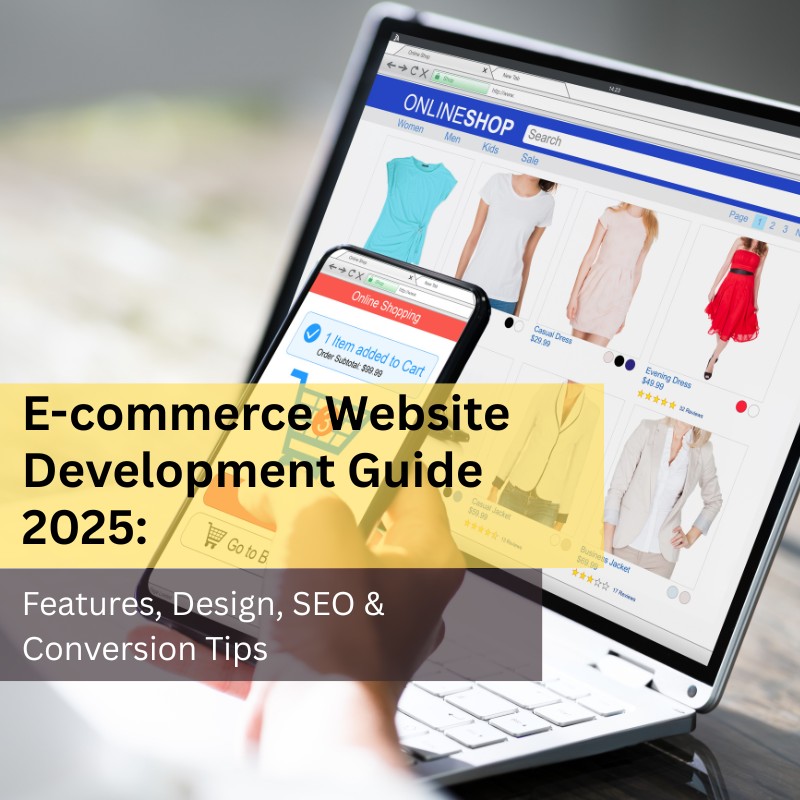
In 2025, building an e-commerce website is more than just putting products online. The competition is fierce, customer attention spans are short and expectations are higher than ever. To stand out and succeed, your online store must be fast, secure, beautifully designed, mobile-friendly, SEO-optimized and built to convert visitors into buyers. Whether you’re just getting started or planning to upgrade your site, this guide covers everything you need to know about e-commerce website development in 2025 — from features and design to SEO and conversion strategies.
Let’s begin with the core features every modern e-commerce site must have. Your website should offer a smooth and seamless shopping experience. Key features include a secure payment gateway, product filters, customer reviews, a smart search bar, user-friendly cart and checkout process, order tracking, wishlist functionality and multiple payment options including UPI, wallets, credit/debit cards and Buy Now Pay Later options. In 2025, personalization is also a big deal. Customers expect product recommendations, recently viewed items and personalized discounts based on their behavior.
When it comes to design, simplicity and speed win. Avoid clutter. Stick to clean layouts, high-quality product images and clear navigation. Your design should reflect your brand identity while making it easy for users to browse, choose and purchase. Keep the call-to-action (CTA) buttons like “Add to Cart” and “Buy Now” clearly visible and accessible. A well-designed mobile version of your store is no longer optional. With more than 70% of users shopping from their phones, your e-commerce website should be 100% responsive, fast-loading and touch-friendly.
Now let’s talk about the backbone of any successful online store — SEO (Search Engine Optimization). If your website doesn’t show up on Google, you’ll have a hard time driving traffic without paying for ads. Start with keyword research. Find what your potential customers are searching for — product types, comparisons, reviews and local queries. Use those keywords in your product titles, meta descriptions, URLs, image alt text and content. Don’t ignore schema markup either — it helps Google display rich results like product ratings, price and availability in search listings. Also, optimize for voice search and long-tail queries, which are gaining traction in 2025.
Beyond search visibility, your site should be built to convert visitors into customers. Speed matters — if your site takes more than 3 seconds to load, many users will leave. Compress images, use caching and choose a reliable hosting solution. Highlight trust signals such as SSL certification, secure payment logos, customer testimonials and money-back guarantees. Offer limited-time deals, free shipping, or bundle offers to create urgency. Make the checkout process frictionless — allow guest checkouts, autofill shipping details and keep form fields to a minimum.
Don’t forget the power of content marketing. Adding blogs, product guides, how-to articles and video reviews can help attract organic traffic and educate your audience. In 2025, AI-generated content and chatbots are also helping e-commerce businesses engage users and drive support without manual effort. However, balance automation with a human touch — especially in areas like customer service and branding.
Security and performance are also major concerns. With rising cyber threats, make sure your site has updated firewalls, regular backups and two-factor authentication for admin access. Customers trust websites that load fast and protect their data. Integrate tools like Google Analytics, Facebook Pixel and heatmaps to track visitor behavior and optimize performance based on real user insights.
Lastly, stay connected with your customers after the sale. Send order updates, ask for reviews, offer discounts for repeat purchases and retarget abandoned carts through email or WhatsApp. A well-managed post-sale experience builds customer loyalty and increases lifetime value.
Building an e-commerce website in 2025 means thinking beyond just aesthetics. You need to balance performance, user experience, SEO and conversion strategies from the ground up. Whether you're selling fashion, electronics, handmade products, or digital services, your website should be built with the user in mind — fast, functional and future-ready.


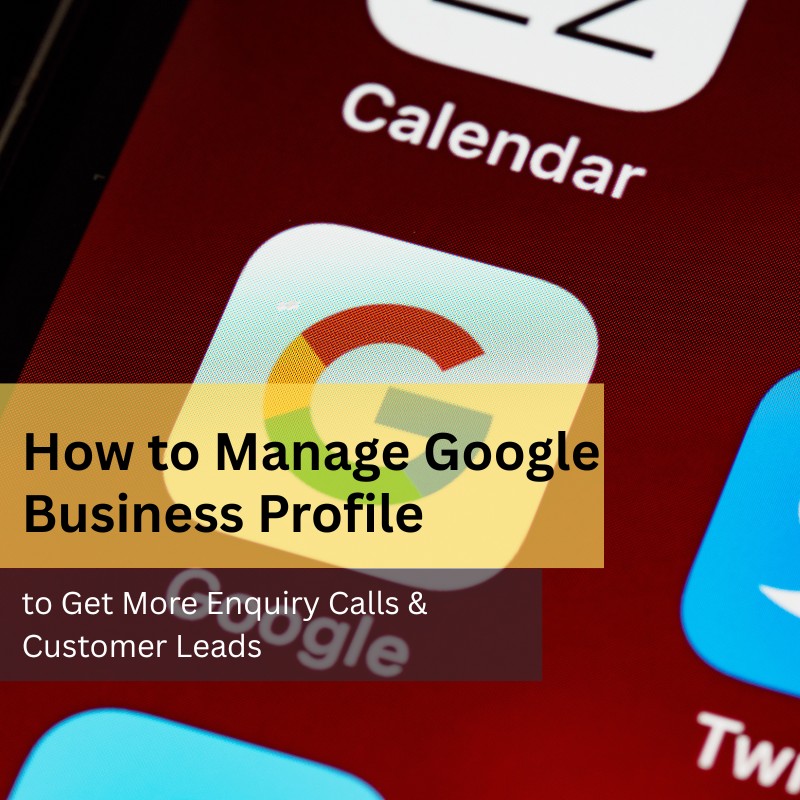
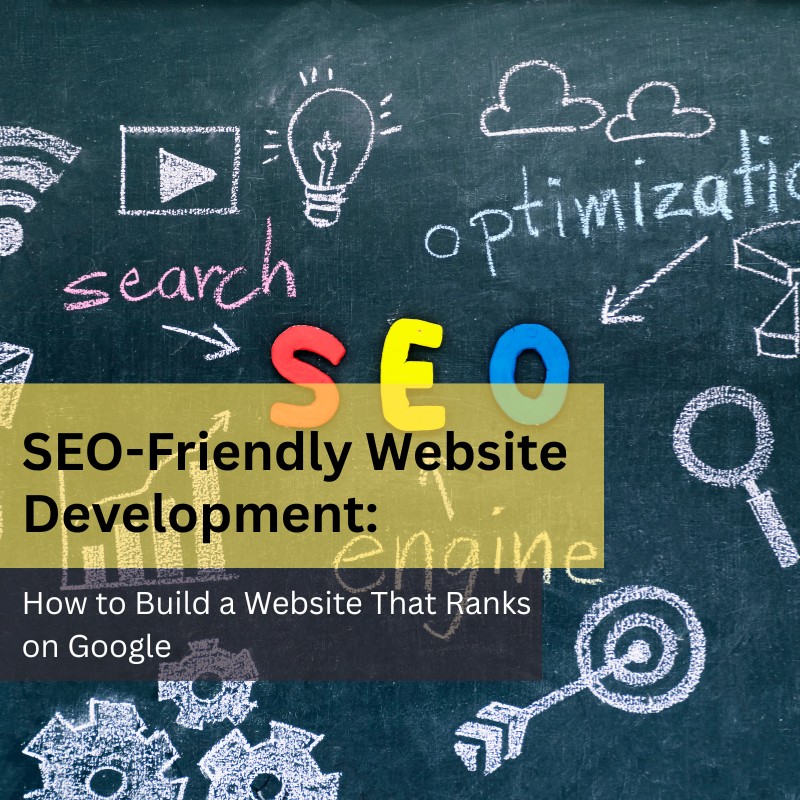
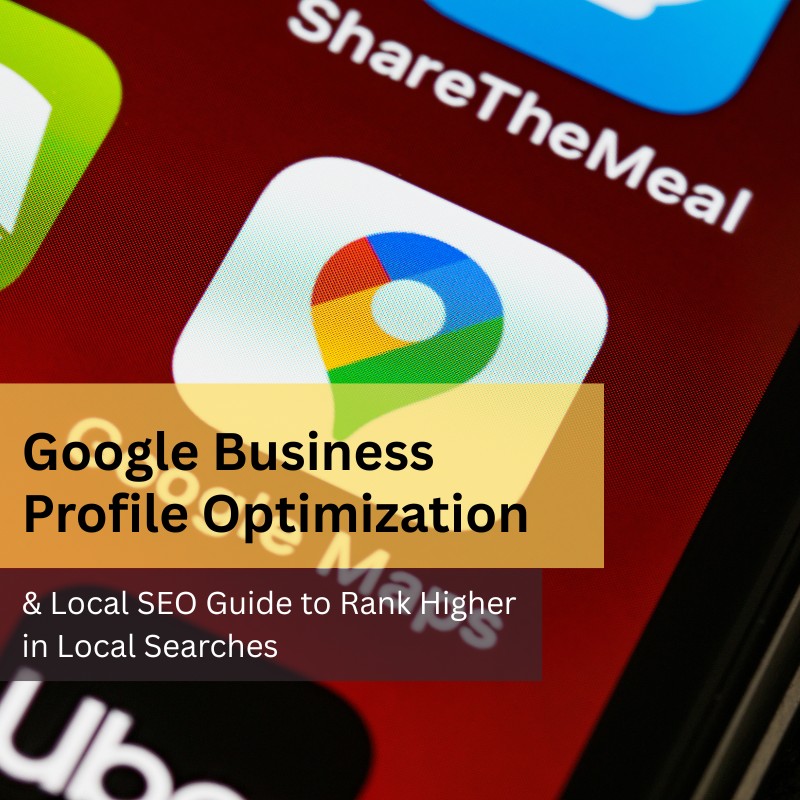
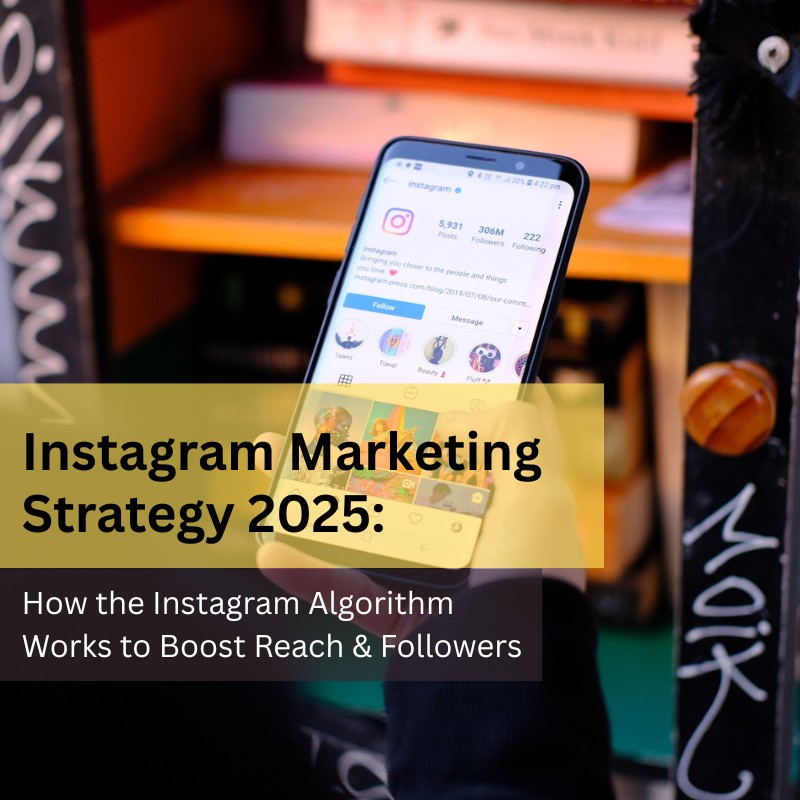
Качество гидроцилиндров, изготовленных на нашем предприятии, соответствует ГОСТам, ТУ 4143-001-99162682-07, а также техническим требованиям конструкторской документации на каждое изделие и удостоверяется свидетельствами о качестве или паспортами https://hydcom.ru/ > Все параметры требуемого гидроцилиндра оговариваются в опросном листе заказа или в чертежах, подготавливаемых до начала производства гидроцилиндров по заказу https://hydcom.ru/politika-obrabotki-personal-nyh-dannyh Значительное внимание ООО ПТК «КРПМС» уделяет вопросам контроля качества выпускаемой продукции https://hydcom.ru/politika-obrabotki-personal-nyh-dannyh Завершающим этапом изготовления гидроцилиндров является проведение стендовых испытаний на прочность и герметичность в соответствии с рекомендациями ГОСТ 18464-96 https://hydcom.ru/politika-obrabotki-personal-nyh-dannyh Подтверждением высокого уровня производства предприятия является сертификация по стандарту ISO 9001-2001 https://hydcom.ru/politika-obrabotki-personal-nyh-dannyh Характеристики, которые могут быть изменены в зависимости от ваших условий эксплуатации: Заполните форму «заказать звонок» и в ближайшее время вам перезвонит наш специалист для конcультации https://hydcom.ru/politika-obrabotki-personal-nyh-dannyh
Your blog is a beacon of knowledge, and it always leaves me motivated to explore further. It would be fascinating to see you examine how these ideas intersect with modern innovations, such as artificial intelligence or sustainable living. Your knack for breaking down complex concepts is truly remarkable. Thanks for consistently delivering such informative content. I'm eagerly awaiting your next piece! click: <a href="https://yarchatgpt.ru">https://yarchatgpt.ru</a>
This resource is a must-read for anyone looking to understand the basics of search engine optimization. Discover how to enhance your blog for better performance and attract more visitors. Whether you're a newcomer or an expert, these insights will help you achieve results. Stay ahead with the latest trends and elevate your digital footprint. Happy exploring! Navigate to: <a href="https://yarchatgpt.ru/">https://yarchatgpt.ru/</a>
Низкая стоимость делает предложение выгодным для ремонтных и строительных компаний, специализирующихся в сфере возведения муниципального жилья https://shop.oknagorizont.ru/catalog/gotovye-balkonnye-plastikovye-dveri/shirina-800spmm/profil-melke Цена: 13 735 p https://shop.oknagorizont.ru/catalog/gotovye-okna-dlja-dachi-so-sklada/steklopaket-odnokamernyjsplbenergosberegayuschijrb/tipokna-dvuhstvorchatoe/page-2 Срок службы более 40 лет https://shop.oknagorizont.ru/products/metallicheskaya-dver-izotermo-110-1-cappuccino Стеклопакет: Однокамерный https://shop.oknagorizont.ru/catalog/gotovye-plastikovye-okna-pvh-so-sklada/tipokna-dvuhstvorchatoe/profil-melkesplitesp60 Поворотная створка https://shop.oknagorizont.ru/products/plastikovoe-okno-veka-whs60-framuga-800x400 Свяжитесь с нами: 8 (958) 100-83-64 https://shop.oknagorizont.ru/catalog/plastikovye-okna-na-zakaz/shirina-1100spmm/vysota-1500spmm
Читать полностью https://kadastrplanmoscow.ru/about ООО Авилон Плаза https://kadastrplanmoscow.ru/yuridicheskie-uslugi Ошибки в выписке ЕГРН https://kadastrplanmoscow.ru/uslugi Какие бывают кадастровые ошибки? Как исправить кадастровую ошибку? Популярные услуги https://kadastrplanmoscow.ru/zemleustroitelnye-uslugi Владимир Шевченко («Кадастровые работы 24/7») Телефон: 8 (499) 888-18-39 Адрес: Москва, Лесная, 43 https://kadastrplanmoscow.ru/napishite-nam
мед оборудование <a href=https://www.medicinskoe-oborudovanie-213.ru>https://www.medicinskoe-oborudovanie-213.ru</a> .
согласовать перепланировку нежилого помещения <a href=https://pereplanirovka-nezhilogo-pomeshcheniya11.ru>https://pereplanirovka-nezhilogo-pomeshcheniya11.ru</a> .
электронный карниз для штор <a href=https://karniz-elektroprivodom.ru>электронный карниз для штор</a> .
рулонные шторы с электроприводом на пластиковые окна <a href=http://www.rulonnaya-shtora-s-elektroprivodom.ru>http://www.rulonnaya-shtora-s-elektroprivodom.ru</a> .
трактор погрузчик аренда <a href=https://arenda-ekskavatora-pogruzchika-cena-2.ru/>arenda-ekskavatora-pogruzchika-cena-2.ru</a> .
перепланировка нежилого здания <a href=https://pereplanirovka-nezhilogo-pomeshcheniya10.ru>перепланировка нежилого здания</a> .
обслуживание мини экскаватора <a href=https://arenda-mini-ekskavatora-v-moskve-2.ru/>arenda-mini-ekskavatora-v-moskve-2.ru</a> .
автоматические жалюзи <a href=zhalyuzi-s-elektroprivodom77.ru>автоматические жалюзи</a> .
карниз для штор с электроприводом <a href=karniz-shtor-elektroprivodom.ru>карниз для штор с электроприводом</a> .
согласовать перепланировку нежилого помещения <a href=http://www.pereplanirovka-nezhilogo-pomeshcheniya9.ru>http://www.pereplanirovka-nezhilogo-pomeshcheniya9.ru</a> .
сайт натяжные потолки <a href=http://stretch-ceilings-samara.ru/>http://stretch-ceilings-samara.ru/</a> .
потолочник отзывы <a href=https://www.natyazhnye-potolki-samara-1.ru>https://www.natyazhnye-potolki-samara-1.ru</a> .
потолочкин натяжные потолки самара <a href=https://stretch-ceilings-samara-1.ru>https://stretch-ceilings-samara-1.ru</a> .
автоматические карнизы для штор <a href=https://www.elektrokarnizy797.ru>автоматические карнизы для штор</a> .
натяжной потолок в самаре <a href=http://natyazhnye-potolki-samara-2.ru/>натяжной потолок в самаре</a> .
натяжные потолки недорого нижний новгород цена <a href=http://natyazhnye-potolki-nizhniy-novgorod.ru>http://natyazhnye-potolki-nizhniy-novgorod.ru</a> .
натяжные потолки нижний новгород цены <a href=https://stretch-ceilings-nizhniy-novgorod.ru/>https://stretch-ceilings-nizhniy-novgorod.ru/</a> .
натяжные потолки нижний новгород официальный сайт <a href=http://www.natyazhnye-potolki-nizhniy-novgorod-1.ru>http://www.natyazhnye-potolki-nizhniy-novgorod-1.ru</a> .
потолочников натяжные потолки <a href=https://stretch-ceilings-nizhniy-novgorod-1.ru>потолочников натяжные потолки</a> .
mostbet ios yuklab olish <a href=http://mostbet4185.ru>mostbet ios yuklab olish</a>
mostbet uz ishlaydi <a href=https://mostbet4182.ru>mostbet uz ishlaydi</a>
Excellent insights here. Home buying isn’t just about finding a house — it’s about finding a place that fits your lifestyle and future plans. This post really highlights that balance between emotional and financial decisions. https://canberracrescentresidence.sg/
перепланировки квартир <a href=http://www.soglasovanie-pereplanirovki-kvartiry11.ru>http://www.soglasovanie-pereplanirovki-kvartiry11.ru</a> .
проектная организация москва перепланировка <a href=http://www.proekt-pereplanirovki-kvartiry16.ru>http://www.proekt-pereplanirovki-kvartiry16.ru</a> .
melbet фрибет за регистрацию <a href=www.melbetbonusy.ru/>melbet фрибет за регистрацию</a> .
сколько стоит узаконить перепланировку в бти <a href=http://zakazat-proekt-pereplanirovki-kvartiry11.ru/>http://zakazat-proekt-pereplanirovki-kvartiry11.ru/</a> .
согласование перепланировки помещений <a href=https://soglasovanie-pereplanirovki-kvartiry14.ru/>soglasovanie-pereplanirovki-kvartiry14.ru</a> .
стоимость перепланировки квартиры <a href=stoimost-soglasovaniya-pereplanirovki-kvartiry.ru>stoimost-soglasovaniya-pereplanirovki-kvartiry.ru</a> .
cjukfcjdfybt <a href=https://soglasovanie-pereplanirovki-kvartiry3.ru/>https://soglasovanie-pereplanirovki-kvartiry3.ru/</a> .
перепланировка услуги <a href=https://soglasovanie-pereplanirovki-kvartiry4.ru/>https://soglasovanie-pereplanirovki-kvartiry4.ru/</a> .
проектное бюро перепланировка квартиры <a href=http://www.proekt-pereplanirovki-kvartiry17.ru>http://www.proekt-pereplanirovki-kvartiry17.ru</a> .
1win kod orqali ro‘yxatdan o‘tish <a href=http://1win5509.ru/>http://1win5509.ru/</a>
мелбет россия <a href=https://melbetbonusy.ru/>melbetbonusy.ru</a> .
Большое спасибо, этот сайт чрезвычайно удобный. Посетите также мою страничку Виртуальные карты для цифрового маркетинга https://t.me/antarctic_wallet_bot/app?startapp=ref_aa22c3203e
Большое спасибо, этот сайт чрезвычайно удобный. Посетите также мою страничку Виртуальные карты для цифрового маркетинга https://t.me/platipomiru_bot?startapp=4Q3W04TO
1вин blackjack <a href=http://1win5510.ru/>http://1win5510.ru/</a>
пин ап рулетка <a href=https://www.pinup5007.ru>пин ап рулетка</a>
проект перепланировки квартиры цена московская область <a href=http://www.proekt-pereplanirovki-kvartiry11.ru>http://www.proekt-pereplanirovki-kvartiry11.ru</a> .
stereo radio alarm clock <a href=https://alarm-radio-clocks.com/>alarm-radio-clocks.com</a> .
пин ап бонус на депозит <a href=www.pinup5008.ru>www.pinup5008.ru</a>
seo продвижение рейтинг компаний <a href=http://www.luchshie-digital-agencstva.ru>http://www.luchshie-digital-agencstva.ru</a> .
топ seo продвижение заказать <a href=https://seo-prodvizhenie-reiting.ru>топ seo продвижение заказать</a> .
seo agencies list <a href=www.reiting-seo-kompanii.ru>www.reiting-seo-kompanii.ru</a> .
продвижение сайта москва <a href=http://reiting-seo-agentstv-moskvy.ru>продвижение сайта москва</a> .
web marketing seo <a href=http://reiting-runeta-seo.ru>web marketing seo</a> .
агентство seo <a href=https://www.reiting-kompanii-po-prodvizheniyu-sajtov.ru>агентство seo</a> .
топ сетевых компаний россии <a href=http://reiting-seo-agentstv.ru/>http://reiting-seo-agentstv.ru/</a> .
profesionales seo <a href=www.top-10-seo-prodvizhenie.ru>profesionales seo</a> .
seo компании <a href=http://seo-prodvizhenie-reiting-kompanij.ru/>seo компании</a> .
технический перевод особенности <a href=http://www.dzen.ru/a/aPFFa3ZMdGVq1wVQ>http://www.dzen.ru/a/aPFFa3ZMdGVq1wVQ</a> .
медицинский перевод выписок <a href=https://telegra.ph/Medicinskij-perevod-tochnost-kak-vopros-zhizni-i-zdorovya-10-16/>telegra.ph/Medicinskij-perevod-tochnost-kak-vopros-zhizni-i-zdorovya-10-16</a> .
переводы научно технической технической литературы <a href=www.teletype.in/@alexd78/HN462R01hzy>www.teletype.in/@alexd78/HN462R01hzy</a> .
1 вин букмекерская <a href=www.1win5518.ru>www.1win5518.ru</a>
seo expert agency <a href=https://reiting-seo-kompaniy.ru/>reiting-seo-kompaniy.ru</a> .
1win скачат <a href=1win5519.ru>1win скачат</a>
1 x bet giri? <a href=https://1xbet-giris-5.com>https://1xbet-giris-5.com</a> .
1xbet giri?i <a href=https://www.1xbet-giris-6.com>1xbet giri?i</a> .
1xbet giri? linki <a href=https://www.1xbet-giris-2.com>https://www.1xbet-giris-2.com</a> .
1 xbet <a href=http://www.1xbet-giris-4.com>http://www.1xbet-giris-4.com</a> .
1x giri? <a href=www.1xbet-giris-1.com>www.1xbet-giris-1.com</a> .
1xbet mobil giri? <a href=http://1xbet-giris-9.com/>1xbet mobil giri?</a> .
1xbet giri? linki <a href=http://1xbet-giris-8.com>1xbet giri? linki</a> .
1xbet ?yelik <a href=http://www.1xbet-giris-10.com>1xbet ?yelik</a> .
1xbet yeni giri? <a href=https://1xbet-giris-7.com>1xbet yeni giri?</a> .
1xbet ?yelik <a href=www.1xbet-giris-3.com/>www.1xbet-giris-3.com/</a> .
1xbet giri? adresi <a href=http://1xbet-9.com>http://1xbet-9.com</a> .
1xbet yeni giri? <a href=https://www.1xbet-4.com>https://www.1xbet-4.com</a> .
1xbet t?rkiye <a href=https://www.1xbet-7.com>https://www.1xbet-7.com</a> .
mostbet kg <a href=http://mostbet12031.ru/>http://mostbet12031.ru/</a>
1xbet giri? <a href=http://1xbet-15.com/>1xbet giri?</a> .
mostbet kg <a href=https://www.mostbet12032.ru>mostbet kg</a>
1xbet yeni giri? adresi <a href=https://1xbet-16.com/>1xbet yeni giri? adresi</a> .
1xbet turkey <a href=http://www.1xbet-12.com>http://www.1xbet-12.com</a> .
1xbet ?ye ol <a href=https://1xbet-10.com>https://1xbet-10.com</a> .
1x lite <a href=www.1xbet-13.com>www.1xbet-13.com</a> .
поставщик медицинского оборудования <a href=http://medoborudovanie-postavka.ru>поставщик медицинского оборудования</a> .
birxbet <a href=http://1xbet-14.com>birxbet</a> .
помощь нарколога <a href=http://narkologicheskaya-klinika-23.ru>http://narkologicheskaya-klinika-23.ru</a> .
1xbet giri? yapam?yorum <a href=www.1xbet-17.com>1xbet giri? yapam?yorum</a> .
медтехника <a href=https://medicinskaya-tehnika.ru/>https://medicinskaya-tehnika.ru/</a> .
оборудование медицинское <a href=http://medicinskoe--oborudovanie.ru/>оборудование медицинское</a> .
клиника наркологическая платная <a href=www.narkologicheskaya-klinika-24.ru>www.narkologicheskaya-klinika-24.ru</a> .
наркологический центр <a href=https://narkologicheskaya-klinika-25.ru/>наркологический центр</a> .
анонимная наркология <a href=www.narkologicheskaya-klinika-27.ru>анонимная наркология</a> .
отделка подвала <a href=gidroizolyaciya-cena-7.ru>отделка подвала</a> .
платная наркологическая клиника в москве <a href=https://narkologicheskaya-klinika-28.ru>платная наркологическая клиника в москве</a> .
гидроизоляция цена за м2 за работу <a href=https://gidroizolyaciya-cena-8.ru/>gidroizolyaciya-cena-8.ru</a> .
блог про seo <a href=http://statyi-o-marketinge6.ru>блог про seo</a> .
мелбет сайт <a href=www.melbetofficialsite.ru/>мелбет сайт</a> .
продвижения сайта в google <a href=https://www.optimizaciya-i-seo-prodvizhenie-sajtov-moskva-1.ru>продвижения сайта в google</a> .
ремонт в подвале <a href=http://www.gidroizolyaciya-podvala-cena.ru>http://www.gidroizolyaciya-podvala-cena.ru</a> .
best alarm clock charger <a href=https://alarm-radio-clocks.com>https://alarm-radio-clocks.com</a> .
торкретирование москва <a href=torkretirovanie-1.ru>torkretirovanie-1.ru</a> .
продвижение сайтов во франции <a href=www.optimizaciya-i-seo-prodvizhenie-sajtov-moskva.ru/>продвижение сайтов во франции</a> .
seo блог <a href=statyi-o-marketinge7.ru>seo блог</a> .
seo курсы <a href=http://kursy-seo-11.ru/>seo курсы</a> .
школа seo <a href=https://www.kursy-seo-12.ru>https://www.kursy-seo-12.ru</a> .
рулонные шторы с пультом <a href=rulonnye-shtory-s-elektroprivodom7.ru>рулонные шторы с пультом</a> .
электрические гардины <a href=https://elektrokarniz797.ru>электрические гардины</a> .
электрические карнизы купить <a href=http://www.elektrokarniz-kupit.ru>http://www.elektrokarniz-kupit.ru</a> .
уличные рулонные шторы <a href=http://www.avtomaticheskie-rulonnye-shtory1.ru>http://www.avtomaticheskie-rulonnye-shtory1.ru</a> .
натяжные потолки нижний новгород с установкой <a href=https://natyazhnye-potolki-nizhniy-novgorod-1.ru/>natyazhnye-potolki-nizhniy-novgorod-1.ru</a> .
рулонные шторы купить москва недорого <a href=www.rulonnye-shtory-s-elektroprivodom7.ru/>рулонные шторы купить москва недорого</a> .
рулонные жалюзи с электроприводом <a href=http://www.avtomaticheskie-rulonnye-shtory77.ru>рулонные жалюзи с электроприводом</a> .
электрокарнизы <a href=elektrokarniz777.ru>электрокарнизы</a> .
видео трансляция заказать <a href=https://zakazat-onlayn-translyaciyu4.ru>https://zakazat-onlayn-translyaciyu4.ru</a> .
карнизы с электроприводом <a href=https://elektrokarniz499.ru/>карнизы с электроприводом</a> .
ставки мостбет <a href=https://mostbet12033.ru>https://mostbet12033.ru</a>
скачать мостбет официальный сайт <a href=http://mostbet12034.ru/>скачать мостбет официальный сайт</a>
empresas seo <a href=https://reiting-seo-agentstv.ru/>empresas seo</a> .
seo рейтинг <a href=http://www.reiting-seo-kompaniy.ru>seo рейтинг</a> .
агентства контекстная реклама продвижение сайтов <a href=http://www.reiting-kompanii-po-prodvizheniyu-sajtov.ru>http://www.reiting-kompanii-po-prodvizheniyu-sajtov.ru</a> .
1xbet turkey <a href=www.1xbet-giris-5.com>www.1xbet-giris-5.com</a> .
1xbet yeni giri? adresi <a href=https://1xbet-giris-2.com/>1xbet-giris-2.com</a> .
натяжные потолки сайт <a href=https://natyazhnye-potolki-nizhniy-novgorod-1.ru/>натяжные потолки сайт</a> .
1xbet yeni adresi <a href=https://www.1xbet-giris-4.com>https://www.1xbet-giris-4.com</a> .
1xbet <a href=https://www.1xbet-giris-6.com>1xbet</a> .
digital агентства москвы <a href=http://luchshie-digital-agencstva.ru/>http://luchshie-digital-agencstva.ru/</a> .
промокод мостбет <a href=https://www.mostbet12035.ru>промокод мостбет</a>
Sichuan Shield Technology Co., Ltd. is a high-tech enterprise integrating R&D, production, sales and service of gas detection and alarm equipment, industrial instruments, valves, explosion-proof electrical appliances, smart IoT products and sensors. It is committed to providing customers with products, services and system solutions that meet their safety application needs. https://www.safety-shield.com/household-combustible-gas-detector/
аренда погрузчика экскаватора <a href=https://arenda-ekskavatora-pogruzchika-1.ru>https://arenda-ekskavatora-pogruzchika-1.ru</a> .
This is a test article created purely for testing purposes. It doesn't contain authentic information, but it works as content for tool testing. Just note that this demo post is artificial and must not be used for publishing. End of demo. Anchor Text zH3nn2aiT8tjvaY0fgG5lmZrL4itE6
согласование перепланировки нежилого здания <a href=pereplanirovka-nezhilogo-pomeshcheniya16.ru>pereplanirovka-nezhilogo-pomeshcheniya16.ru</a> .
согласование перепланировки нежилого здания <a href=www.pereplanirovka-nezhilogo-pomeshcheniya17.ru>www.pereplanirovka-nezhilogo-pomeshcheniya17.ru</a> .
согласование перепланировки нежилого здания <a href=www.pereplanirovka-nezhilogo-pomeshcheniya18.ru/>www.pereplanirovka-nezhilogo-pomeshcheniya18.ru/</a> .
смарт вэй <a href=https://sajt-smart-way.ru/>https://sajt-smart-way.ru/</a> .
Толщина мат https://www.perof.ru/news/prochnye-alyuminievye-peregorodki-diema-s-zhalyuzi-ot-perof-pozvolyayut-menyat-stepen-vizualnoy-izol/ заполнения https://www.perof.ru/glossariy/zhalyuzi-rollety-rolstavni/ Срок изготовления https://www.perof.ru/news/yarkiy-dizayn-dlya-peregorodok-diema-lux-v-ofise-mkb-lizing-ispolzuet-firmennye-tsveta-i-znak-logoti/ от 4 000 руб https://www.perof.ru/news/tselnosteklyannye-ofisnye-peregorodki-dekorirovannye-drapirovkami-iz-tkani-novyy-modnyy-trend-v-ofis/ /м? Участие в благотворительной акции https://www.perof.ru/news/podbor-i-postavka-ofisnoy-mebeli-lyubogo-klassa-ochen-aktualnaya-usluga-nash-spetsialist-po-podboru-/ Почта: zakaz@mebela https://www.perof.ru/news/pri-sozdanii-interera-banka-kak-pravilo-ispolzuyut-strogie-i-lakonichnye-resheniya-no-v-to-zhe-vremya/ ru Адрес: г https://www.perof.ru/news/vereika/ Москва, ул https://www.perof.ru/glossariy/trelyazh/ Моршанская, дом 6 https://www.perof.ru/catalog/ofisnye-peregorodki/diema-ofisnye-peregorodki/ Это прочные сборно-разборные конструкции, каркасом которых является алюминиевый профиль https://www.perof.ru/glossariy/akustika-stroitelnaya/ Они выпускаются в различных вариантах оформления – полностью стеклянные на алюминиевом профиле, глухие из ЛДСП/МДФ или комбинированные https://www.perof.ru/catalog/ofisnye-peregorodki/diema-ofisnye-peregorodki/ Такие перегородки легко сочетаются с различными элементами интерьерного декора https://www.perof.ru/zhalyuzi/gorizntalnie-zhalyuzi/
seo продвижение рейтинг компаний <a href=http://reiting-seo-kompanii.ru>seo продвижение рейтинг компаний</a> .
1xbet t?rkiye <a href=1xbet-giris-9.com>1xbet t?rkiye</a> .
услуги аренда экскаватора погрузчика <a href=http://www.arenda-ekskavatora-pogruzchika-2.ru>услуги аренда экскаватора погрузчика</a> .
студия подкастов спб <a href=studiya-podkastov-spb4.ru>студия подкастов спб</a> .
мостбет <a href=http://mostbet12037.ru/>http://mostbet12037.ru/</a>
швейное производство <a href=https://miniatelie.ru>https://miniatelie.ru</a> .
mostbet com скачать <a href=https://mostbet12036.ru/>https://mostbet12036.ru/</a>
электрокарнизы для жалюзи <a href=https://avtomaticheskie-zhalyuzi.ru/>avtomaticheskie-zhalyuzi.ru</a> .
швейная фабрика <a href=http://www.miniatelie.ru>http://www.miniatelie.ru</a> .
производство детской одежды спб <a href=http://arbuztech.ru/>http://arbuztech.ru/</a> .
рейтинг компаний seo услуг <a href=https://reiting-seo-kompanii.ru/>reiting-seo-kompanii.ru</a> .
сколько стоит оформить перепланировку квартиры в бти <a href=https://skolko-stoit-uzakonit-pereplanirovku.ru>https://skolko-stoit-uzakonit-pereplanirovku.ru</a> .
мелбет кыргызстан <a href=mostbet12039.ru>mostbet12039.ru</a>
стоимость согласования перепланировки в бти <a href=www.skolko-stoit-uzakonit-pereplanirovku-1.ru>стоимость согласования перепланировки в бти</a> .
sure win login <a href=www.surewin-online.com>www.surewin-online.com</a> .
ganabet casino <a href=www.ganabet-online.com/>www.ganabet-online.com/</a> .
newsky88 login <a href=https://newsky-online.com/>https://newsky-online.com/</a> .
jp99 slot <a href=www.jp99-online.com>www.jp99-online.com</a> .
casino valor <a href=https://valorslots.com/>casino valor</a> .
перепланировка квартиры цена под ключ <a href=www.uzakonit-pereplanirovku-cena.ru/>www.uzakonit-pereplanirovku-cena.ru/</a> .
услуги по согласованию перепланировки квартиры <a href=http://soglasovanie-pereplanirovki-1.ru/>http://soglasovanie-pereplanirovki-1.ru/</a> .
casino good day 4 play <a href=http://www.goodday4play-online.com>http://www.goodday4play-online.com</a> .
проект перепланировки нежилого помещения <a href=https://automobilist.forum24.ru/?1-7-0-00000293-000-0-0>проект перепланировки нежилого помещения</a> .
goliath casino bonus <a href=www.goliath-casino.com/>www.goliath-casino.com/</a> .
beep казино <a href=www.beepbeepcasino-online.com/>www.beepbeepcasino-online.com/</a> .
мостбет скачать <a href=https://mostbet12038.ru/>https://mostbet12038.ru/</a>
рейтинг компаний seo оптимизации <a href=http://www.reiting-seo-kompanii.ru>http://www.reiting-seo-kompanii.ru</a> .
icebet casino bonus <a href=http://icebet-online.com/>icebet casino bonus</a> .
мостбет вход, регистрация <a href=https://mostbet12040.ru/>https://mostbet12040.ru/</a>
1win пополнение <a href=https://www.1win12019.ru>https://www.1win12019.ru</a>
918kiss app <a href=https://www.918kisslama.com>918kiss app</a> .
777 bet game online <a href=http://www.777betcasino-online.com>777 bet game online</a> .
перепланировка проект <a href=https://www.telegra.ph/Legalnyj-put-k-novoj-planirovke-ot-idei-do-akta-priemki-11-12>перепланировка проект</a> .
кухни на заказ в санкт-петербурге <a href=https://kuhni-spb-10.ru/>kuhni-spb-10.ru</a> .
кухни на заказ в санкт-петербурге <a href=https://kuhni-spb-9.ru/>https://kuhni-spb-9.ru/</a> .
кухня по индивидуальному заказу спб <a href=kuhni-spb-11.ru>kuhni-spb-11.ru</a> .
изготовление кухни на заказ в спб <a href=https://kuhni-spb-12.ru>изготовление кухни на заказ в спб</a> .
1вин зеркало <a href=https://1win5520.ru>https://1win5520.ru</a>
heaps o win <a href=https://heapsofwins-online.com>heaps o win</a> .
win crash game <a href=http://aviator-game-cash.com/>win crash game</a> .
aviator x <a href=https://aviator-game-best.com/>aviator-game-best.com</a> .
aviator money <a href=http://aviator-game-winner.com>http://aviator-game-winner.com</a> .
1 win скачать на айфон <a href=http://1win5521.ru>http://1win5521.ru</a>
рейтинг seo агентств <a href=https://reiting-seo-kompanii.ru>рейтинг seo агентств</a> .
The golden age of Australian television gave the world game show entertainment. Discover how it all began in the 1950s and evolved over decades. https://australiangameshows.top/
aviator bonus game <a href=https://aviator-game-predict.com/>aviator-game-predict.com</a> .
электрокарниз недорого <a href=http://www.prokarniz36.ru>http://www.prokarniz36.ru</a> .
plane crash game online earn money <a href=https://aviator-game-deposit.com>https://aviator-game-deposit.com</a> .
электрокарнизы для штор цена <a href=https://elektrokarniz1.ru>https://elektrokarniz1.ru</a> .
электрокарнизы цена <a href=http://elektrokarniz2.ru>http://elektrokarniz2.ru</a> .
электрокарнизы <a href=http://provorota.su>http://provorota.su</a> .
электронный карниз для штор <a href=http://www.elektrokarnizy77.ru>электронный карниз для штор</a> .
гардина с электроприводом <a href=http://www.elektrokarniz-dlya-shtor11.ru>http://www.elektrokarniz-dlya-shtor11.ru</a> .
гардина с электроприводом <a href=http://www.elektrokarniz-dlya-shtor15.ru>http://www.elektrokarniz-dlya-shtor15.ru</a> .
рулонные шторы для панорамных окон <a href=www.rulonnye-shtory-s-elektroprivodom.ru>www.rulonnye-shtory-s-elektroprivodom.ru</a> .
электрические гардины для штор <a href=elektrokarniz98.ru>elektrokarniz98.ru</a> .
Как победить лень и стать активнее: рабочие мотивирующие приёмы https://gratiavitae.ru/
melbet зеркало 2020 <a href=https://melbet5008.ru>melbet зеркало 2020</a>
электрокарниз недорого <a href=https://elektrokarniz495.ru/>https://elektrokarniz495.ru/</a> .
мелбет букмекерская зеркало <a href=https://melbet5010.ru/>мелбет букмекерская зеркало</a>
рулонные шторы с электроприводом купить в москве <a href=www.rulonnye-shtory-s-elektroprivodom499.ru>www.rulonnye-shtory-s-elektroprivodom499.ru</a> .
электропривод рулонных штор <a href=http://www.rulonnye-shtory-s-elektroprivodom177.ru>http://www.rulonnye-shtory-s-elektroprivodom177.ru</a> .
perplexity labs это https://uniqueartworks.ru/perplexity-kupit.html
рулонные шторы на пульте <a href=www.prokarniz28.ru>www.prokarniz28.ru</a> .
бамбуковые электрожалюзи <a href=www.prokarniz23.ru>www.prokarniz23.ru</a> .
умный дом шторы <a href=www.prokarniz23.ru>умный дом шторы</a> .
рулонные шторы на пульте <a href=www.prokarniz28.ru/>www.prokarniz28.ru/</a> .
seo компания москва <a href=www.reiting-seo-kompanii.ru>www.reiting-seo-kompanii.ru</a> .
умные шторы с алисой <a href=https://prokarniz27.ru/>https://prokarniz27.ru/</a> .
melbet kg <a href=https://www.melbet5002.ru>https://www.melbet5002.ru</a>
играть в слоты <a href=www.wwwpsy.ru>www.wwwpsy.ru</a> .
жалюзи с электроприводом <a href=www.prokarniz23.ru>жалюзи с электроприводом</a> .
melbet игровые автоматы <a href=http://melbet5003.ru/>http://melbet5003.ru/</a>
melbet официальный сайт <a href=https://v-bux.ru/>v-bux.ru</a> .
промокод мелбет <a href=https://www.melbetbonusy.ru>https://www.melbetbonusy.ru</a> .
melbet login mobil <a href=https://melbet5011.ru>https://melbet5011.ru</a>
serviciu clienți melbet <a href=melbet5012.ru>serviciu clienți melbet</a>
сайт для заказа курсовых работ <a href=https://kupit-kursovuyu-3.ru/>https://kupit-kursovuyu-3.ru/</a> .
заказать студенческую работу <a href=http://kupit-kursovuyu-2.ru>http://kupit-kursovuyu-2.ru</a> .
курсовая заказ купить <a href=https://kupit-kursovuyu-4.ru/>курсовая заказ купить</a> .
курсовые работы заказать <a href=https://kupit-kursovuyu-1.ru/>kupit-kursovuyu-1.ru</a> .
chicken road онлайн <a href=http://kurica2.ru/ru>http://kurica2.ru/ru</a> .
курсовые заказ <a href=https://kupit-kursovuyu-4.ru/>курсовые заказ</a> .
заказать курсовой проект <a href=http://kupit-kursovuyu-7.ru/>заказать курсовой проект</a> .
заказать курсовую работу <a href=https://kupit-kursovuyu-9.ru/>заказать курсовую работу</a> .
заказ курсовых работ <a href=www.kupit-kursovuyu-8.ru>www.kupit-kursovuyu-8.ru</a> .
купить курсовую сайт <a href=https://kupit-kursovuyu-6.ru/>kupit-kursovuyu-6.ru</a> .
написание курсовых на заказ <a href=www.kupit-kursovuyu-10.ru/>написание курсовых на заказ</a> .
pariază pe melbet <a href=http://melbet5013.ru>pariază pe melbet</a>
Rediscover joy in eating and movement through a plan designed for metabolic healing and freedom. https://metabolicfreedom.top/ metabolic freedom book
pariuri sportive melbet <a href=www.melbet5014.ru>pariuri sportive melbet</a>
melbet Telegram <a href=melbet5015.ru>melbet5015.ru</a>
лучшие агентства seo продвижения <a href=http://reiting-seo-kompanii.ru/>http://reiting-seo-kompanii.ru/</a> .
melbet support <a href=www.melbet5005.ru>melbet support</a>
melbet first deposit bonus <a href=http://melbetbonusy.ru/>http://melbetbonusy.ru/</a> .
бамбуковые электрожалюзи <a href=www.elektricheskie-zhalyuzi5.ru>www.elektricheskie-zhalyuzi5.ru</a> .
мелбет зеркало новое <a href=https://melbet5007.ru/>https://melbet5007.ru/</a>
скачать 1win с официального сайта <a href=https://www.1win12020.ru>https://www.1win12020.ru</a>
филлер цена <a href=http://filler-kupit1.ru/>http://filler-kupit1.ru/</a> .
Потолочные плиты Армстронг <a href=potolok-armstrong1.ru>potolok-armstrong1.ru</a> .
филлеры москва оптом <a href=http://filler-kupit.ru>http://filler-kupit.ru</a> .
досудебная экспертиза залива <a href=https://ekspertiza-zaliva-kvartiry-5.ru/>досудебная экспертиза залива</a> .
карниз для штор электрический <a href=https://www.elektrokarnizmoskva.ru>карниз для штор электрический</a> .
melbet deposit <a href=http://melbet5009.ru/>http://melbet5009.ru/</a>
скачать программу мелбет [url=https://www.melbet5004.ru]https://www.melbet5004.ru[/url]
1вин бонусы спорт как потратить <a href=1win12041.ru>1win12041.ru</a>
частная наркологическая клиника в москве анонимное <a href=http://narkologicheskaya-klinika-35.ru/>http://narkologicheskaya-klinika-35.ru/</a> .
наркологическая клиника <a href=http://narkologicheskaya-klinika-37.ru>наркологическая клиника</a> .
частная наркологическая клиника в москве анонимное <a href=narkologicheskaya-klinika-38.ru>narkologicheskaya-klinika-38.ru</a> .
номер наркологии <a href=http://www.narkologicheskaya-klinika-34.ru>http://www.narkologicheskaya-klinika-34.ru</a> .
экстренное вытрезвление <a href=https://narkologicheskaya-klinika-36.ru/>https://narkologicheskaya-klinika-36.ru/</a> .
наркологическая помощь <a href=http://narkologicheskaya-klinika-39.ru/>наркологическая помощь</a> .
как отыграть бонусы казино в 1win <a href=www.1win12042.ru>www.1win12042.ru</a>
анонимная наркология <a href=http://www.narkologicheskaya-klinika-40.ru>анонимная наркология</a> .
I love how clean and comfortable the rooms are. Truly the best karaoke spot around <a href="https://dopamine.isweb.co.kr">도파민가라오케</a>
seo агентства <a href=http://reiting-seo-kompanii.ru/>seo агентства</a> .
промокод 1вин <a href=http://1win12044.ru/>промокод 1вин</a>
как перейти на бонусный счет в 1win <a href=https://1win12043.ru>https://1win12043.ru</a>
инъекционная гидроизоляция <a href=https://inekczionnaya-gidroizolyacziya1.ru/>инъекционная гидроизоляция</a> .
помощь в написании курсовой <a href=https://kupit-kursovuyu-22.ru/>kupit-kursovuyu-22.ru</a> .
стоимость услуг экскаватора погрузчика <a href=http://arenda-ekskavatora-pogruzchika-5.ru/>стоимость услуг экскаватора погрузчика</a> .
материалы усиления проема <a href=www.usilenie-proemov1.ru/>www.usilenie-proemov1.ru/</a> .
ремонт бетонных конструкций материалы <a href=www.remont-betonnykh-konstrukczij-usilenie.ru>ремонт бетонных конструкций материалы</a> .
помощь студентам курсовые <a href=https://kupit-kursovuyu-21.ru/>https://kupit-kursovuyu-21.ru/</a> .
сырость в подвале <a href=https://gidroizolyacziya-podvala-iznutri-czena.ru/>https://gidroizolyacziya-podvala-iznutri-czena.ru/</a> .
гидроизоляция подвалов цена <a href=https://www.gidroizolyacziya-czena1.ru>https://www.gidroizolyacziya-czena1.ru</a> .
аренда экскаватора погрузчика цена москва <a href=http://arenda-ekskavatora-pogruzchika-6.ru/>аренда экскаватора погрузчика цена москва</a> .
инъекционная гидроизоляция стен <a href=https://inekczionnaya-gidroizolyacziya.ru>инъекционная гидроизоляция стен</a> .
гидроизоляция подвала гарантия <a href=https://www.gidroizolyacziya-podvala-samara.ru>https://www.gidroizolyacziya-podvala-samara.ru</a> .
гидроизоляция цена за метр <a href=https://gidroizolyacziya-czena.ru>https://gidroizolyacziya-czena.ru</a> .
усиление проёмов композитными материалами <a href=https://usilenie-proemov2.ru/>https://usilenie-proemov2.ru/</a> .
стоимость гидроизоляции подвала <a href=https://gidroizolyacziya-podvala-iznutri-czena1.ru>https://gidroizolyacziya-podvala-iznutri-czena1.ru</a> .
курсовая заказать <a href=www.kupit-kursovuyu-27.ru>курсовая заказать</a> .
студенческие работы на заказ <a href=https://kupit-kursovuyu-30.ru/>студенческие работы на заказ</a> .
покупка курсовых работ <a href=http://kupit-kursovuyu-22.ru/>http://kupit-kursovuyu-22.ru/</a> .
Indexing and indicator checking serve for Google and Yandex. web indexing my indexing World Health Organization tin welfare from this serve? This inspection and repair is utile for site owners and SEO specialists WHO deprivation to addition their visibleness in Google and Yandex, meliorate their site rankings, and increment constituent traffic. SpeedyIndex helps rapidly indicant backlinks, recently pages, and website updates. Link Building Workshop http://fastsiteing.tilda.ws/
Indexing and indicator checking serve for Google and Yandex. web indexing my indexing World Health Organization tin welfare from this serve? This inspection and repair is utile for site owners and SEO specialists WHO deprivation to addition their visibleness in Google and Yandex, meliorate their site rankings, and increment constituent traffic. SpeedyIndex helps rapidly indicant backlinks, recently pages, and website updates. Link Building Workshop https://linksbuilder.fun/
пин ап бесплатные игры казино <a href=pinup5010.ru>pinup5010.ru</a>
пин ап демо слоты <a href=http://pinup5013.ru/>http://pinup5013.ru/</a>
дайсон официальный <a href=https://dn-fen-4.ru/>https://dn-fen-4.ru/</a> .
Ignite Iron Flame instantly! Violet's voyage vast. Free PDF today! https://ironflamepdf.top/ Iron Flame Ending
московская школа онлайн обучение <a href=http://shkola-onlajn5.ru/>московская школа онлайн обучение</a> .
гидроизоляция подвала изнутри цена <a href=https://gidroizolyacziya-podvala-iznutri-czena4.ru/>гидроизоляция подвала изнутри цена</a> .
гидроизоляция подвала гаража <a href=https://gidroizolyacziya-podvala-iznutri-czena5.ru/>гидроизоляция подвала гаража</a> .
усиление проёма швеллером <a href=https://usilenie-proemov5.ru/>усиление проёма швеллером</a> .
гидроизоляция цена за рулон <a href=https://gidroizolyacziya-czena5.ru/>гидроизоляция цена за рулон</a> .
гидроизоляция подвалов цена <a href=https://gidroizolyacziya-czena5.ru/>gidroizolyacziya-czena5.ru</a> .
гидроизоляция подвала под ключ <a href=https://gidroizolyacziya-czena4.ru/>gidroizolyacziya-czena4.ru</a> .
усиление проема металлом <a href=https://usilenie-proemov6.ru/>усиление проема металлом</a> .
ремонт бетонных конструкций компания <a href=https://remont-betonnykh-konstrukczij-usilenie2.ru/>ремонт бетонных конструкций компания</a> .
нарколог на дому <a href=https://narkolog-na-dom-4.ru/>нарколог на дому</a> .
гидроизоляция подвала рулонная <a href=https://gidroizolyacziya-podvala-samara2.ru/>гидроизоляция подвала рулонная</a> .
инъекционная гидроизоляция многоквартирный дом <a href=https://inekczionnaya-gidroizolyacziya4.ru/>inekczionnaya-gidroizolyacziya4.ru</a> .
наркологическая платная клиника [url=https://narkologicheskaya-klinika-48.ru/]narkologicheskaya-klinika-48.ru[/url] .
нарколог круглосуточно на дом <a href=https://narkolog-na-dom-3.ru/>нарколог круглосуточно на дом</a> .
инъекционная гидроизоляция частный дом <a href=https://inekczionnaya-gidroizolyacziya5.ru/>inekczionnaya-gidroizolyacziya5.ru</a> .
вывод. из. запоя. на. дому. москва. <a href=https://vyvod-iz-zapoya-4.ru/>vyvod-iz-zapoya-4.ru</a> .
вывод из запоя на дому в москве <a href=https://vyvod-iz-zapoya-5.ru/>вывод из запоя на дому в москве</a> .
услуги продвижения seo рязань timoly.ru сеотика.рф <a href=https://prodvizhenie-sajtov-po-trafiku1.ru/>prodvizhenie-sajtov-po-trafiku1.ru</a> .
поисковое seo в москве <a href=https://prodvizhenie-sajtov-v-moskve1.ru/>prodvizhenie-sajtov-v-moskve1.ru</a> .
seo клиники наркологии <a href=https://seo-kejsy2.ru/>seo клиники наркологии</a> .
услуги продвижения seo рязань timoly.ru сеотика.рф <a href=https://prodvizhenie-sajtov-po-trafiku2.ru/>prodvizhenie-sajtov-po-trafiku2.ru</a> .
раскрутка сайта по трафику <a href=https://prodvizhenie-sajtov-po-trafiku.ru/>prodvizhenie-sajtov-po-trafiku.ru</a> .
internetagentur seo <a href=https://prodvizhenie-sajtov-v-moskve3.ru/>prodvizhenie-sajtov-v-moskve3.ru</a> .
многоуровневый линкбилдинг <a href=https://seo-kejsy.ru/>seo-kejsy.ru</a> .
реклама наркологической клиники <a href=https://seo-kejsy1.ru/>seo-kejsy1.ru</a> .
солнечные электростанции <a href=dividend-center.com/novosti/solnechnaya-energetika-kak-pojmat-svet-i-prevratit-ego-v-dengi-komfort-i-chistyj-vozdux.html>dividend-center.com/novosti/solnechnaya-energetika-kak-pojmat-svet-i-prevratit-ego-v-dengi-komfort-i-chistyj-vozdux.html</a> .
глубокий комлексный аудит сайта <a href=https://prodvizhenie-sajtov-v-moskve4.ru/>глубокий комлексный аудит сайта</a> .
продвижение по трафику <a href=https://prodvizhenie-sajtov-v-moskve2.ru/>продвижение по трафику</a> .
руководства по seo <a href=https://seo-blog9.ru/>seo-blog9.ru</a> .
digital маркетинг блог <a href=https://seo-blog8.ru/>seo-blog8.ru</a> .
сео продвижение сайта по трафику <a href=https://prodvizhenie-sajta-po-trafiku1.ru/>prodvizhenie-sajta-po-trafiku1.ru</a> .
блог seo агентства <a href=https://seo-blog12.ru/>seo-blog12.ru</a> .
раскрутка сайтов интернет <a href=https://prodvizhenie-sajta-po-trafiku2.ru/>prodvizhenie-sajta-po-trafiku2.ru</a> .
кухни на заказ в спб цены <a href=https://kuhni-na-zakaz-5ru/>кухни на заказ в спб цены</a> .
seo клиники наркологии <a href=https://seo-kejsy6.ru/>seo-kejsy6.ru</a> .
сео портала увеличить трафик специалисты <a href=https://prodvizhenie-sajta-po-trafiku3.ru/>prodvizhenie-sajta-po-trafiku3.ru</a> .
кухня на заказ спб от производителя недорого <a href=https://kuhni-na-zakaz-4ru/>kuhni-na-zakaz-4ru</a> .
стерилизатор плазменный низкотемпературный <a href=https://plazm-sterilizatory.ru/>plazm-sterilizatory.ru</a> .
какой налог в эстонии <a href=https://financeprofessional.ee>https://financeprofessional.ee</a> .
стерилизатор плазменный низкотемпературный <a href=https://plazmennyy-sterilizator.ru/>plazmennyy-sterilizator.ru</a> .
плазменные стерилизаторы <a href=https://plazm-sterilizatory.ru/>плазменные стерилизаторы</a> .